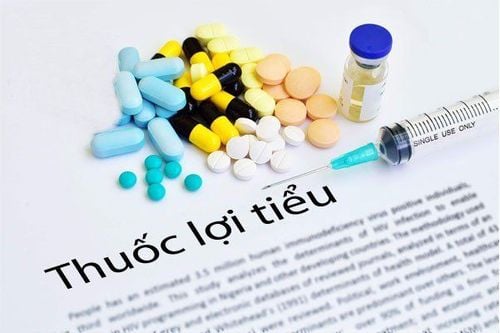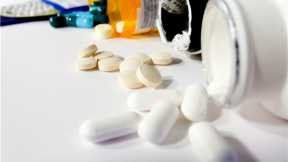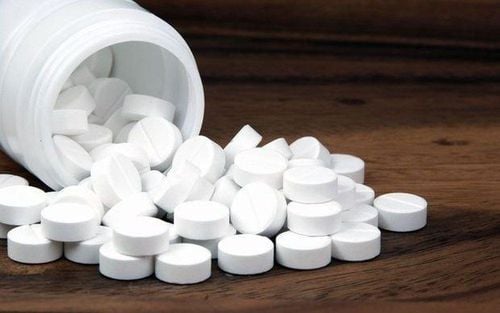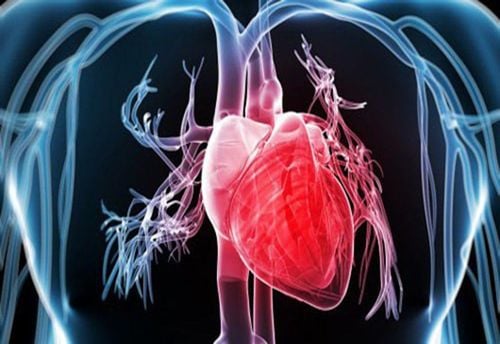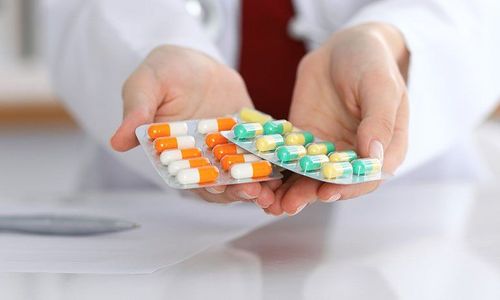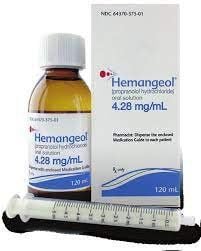This is an automatically translated article.
Grade 1 hypertension is high blood pressure with blood pressure readings just above normal, and treatment usually starts with lifestyle changes, then medication if blood pressure does not improve. There are many drug classes that can be chosen in the treatment of grade 1 hypertension, let's learn about those drug groups through the article below.
1. What is grade 1 hypertension?
Hypertension is a condition in which the blood pressure on the artery walls increases. Grade 1 hypertension is diagnosed when systolic blood pressure is between 140 and 159 mmHg and/or diastolic blood pressure is between 90 and 99 mmHg.Grade 1 hypertension is a mild type of hypertension, but if left undiagnosed and untreated, there is also a risk of damage to target organs. Causes cardiovascular, kidney, brain and eye complications. People are initiated on drugs for grade 1 hypertension in people at moderate or higher risk, i.e. with at least two risk factors (including advanced age, male gender, early menopause, smoking). smoking, family history of cardiovascular disease...) or who do not have any of the above risks who have changed their lifestyle for 3 to 6 months but have not brought their blood pressure back to normal.
2. Drugs to treat high blood pressure grade 1
There are many different types of drugs for treating stage 1 hypertension, and the choice of initial drug depends on comorbidities or drug response. At this level, patients are often prescribed medication for grade 1 hypertension or monotherapy, that is, taking 1 drug. Except for high-risk or very high-risk grade 1 hypertension, a combination of 2 drugs is required.Diuretics Diuretics have the effect of increasing the excretion of water and some electrolytes out through the urine, helping to reduce the volume of circulation, reduce the burden on the heart and lower blood pressure. A diuretic commonly used in the treatment of grade 1 hypertension is a thiazide diuretic (hypothiazide) that removes water and sodium ions from the blood.
In addition, some other diuretics are also used in treatment such as loop diuretics (furosemide), potassium-sparing diuretics or aldosterone antagonists (spironolactone) that can be used in case of grade 1 hypertension with patients. have kidney failure.
Calcium channel blockers Calcium is an essential ion for all muscle cell activities, including the heart muscle and the muscles surrounding blood vessels. muscle contraction. Calcium channel blockers inhibit the movement of calcium into muscle cells. The decrease in intracellular calcium reduces myocardial contractility and blood vessel constriction, thereby lowering blood pressure. This blood pressure-lowering drug also relaxes the muscle cells located around the arteries, helping to lower blood pressure.
Some of these drugs include, Amlodipine, nicardipine, Nimodipine...
ACE inhibitors An ACE inhibitor is a blood pressure lowering medicine that works by inhibiting the action of angiotensin converting enzyme (ACE) ACE), which is an important enzyme in the conversion of Angiotensin I to Angiotensin II. Angiotensin II is a chemical that has a very strong vasoconstrictor effect and is involved in water retention, salt retention causing hypertension. This substance plays an important role in essential hypertension. ACE inhibitors help reduce the production of angiotensin II. As a result, the drug causes blood vessels to avoid constriction and widen or dilate, leading to a drop in blood pressure. Low blood pressure makes it easier for the heart to pump blood to the periphery and can improve function for patients with symptomatic heart failure. Besides, this group of drugs is also selected for patients with diabetes.
Some drugs of this group include enalapril, perindopril, captopril, Lisinopril, Trandolapril...
Angiotensin II receptor antagonists This is a drug that competes for Angiotensin II binding sites at the AT1 receptor. Blocks Angiotensin II from binding to receptors to cause vasoconstriction and sodium retention causing hypertension. Due to the affinity of these drugs for the receptor is many times higher than that of Angiotensin, binding does not cause pharmacological effects.
Some commonly used drugs such as Losartan (Cozaar), Telmisartan (Micardis),
Valsartan (Diovan), Irbesartan (Avapro), Candesartan (Atacand), Eprosartan (Teveten) or Azilsartan (Edarbi)...
Blocker group beta sympathomimetic Beta blockers are drugs that prevent neurotransmitters such as norepinephrine and epinephrine (adrenaline) from binding to both beta 1 and beta 2 receptors. These two receptors are present in many organs. and muscles, including the muscles around the blood vessels, this attachment causes the effect of this transmitter to narrow the blood vessels, weaken the heart's activity, increase the heart rate.
By blocking these substances from binding to the receptor will block the effects of norepinephrine and epinephrine. Beta blockers are a type of medication that lowers blood pressure by dilating blood vessels and reducing heart rate. They can cause airway constriction as a side effect (not for patients with asthma, COPD) because beta receptors located in the lungs, if blocked, cause the muscles surrounding the airways to contract. ..
Some commonly used drugs in this group include: Atenolol (Tenormin), Betaxolol, Bisoprolol fumarate (Zebeta), Carvedilol (Coreg), Metoprolol (Lopressor, ToprolXL), Nadolol (Corgard), Pindolol, Penbutolol, Propranolol...
Other drugs Alpha blockers, alpha-beta blockers, renin inhibitors, drugs acting on the central nervous system... can also be one of the options to treat grade 1 hypertension.
.
3. Note when treating high blood pressure grade 1
For low-risk grade 1 hypertension, it is recommended to adopt lifestyle changes 3 to 6 months before starting drug therapy. Lifestyle change measures that you should take include:Limit salt intake to less than 5g/day. Limit alcohol consumption to less than 14 units/week for men and less than 8 units/week for women. Note 1 unit is equivalent to 125 ml of wine or 250 ml of beer. Increase the consumption of fresh vegetables, fruits, fish, nuts and unsaturated fatty acids. Reduce consumption of red meat and animal fat. Encourage use of low-fat dairy products. Control weight, avoid overweight/obesity, and target BMI < 23 kg/m2. If overweight and obese should take measures to lose weight. The waist circumference is < 90 cm for men and less than 80 cm for women. Moderate physical activity, depending on each body at least 30 minutes a day and at least 5 days a week. Exercise is encouraged such as walking, jogging, running, cycling, swimming... Quitting smoking: If you can't quit on your own, you may need support measures. If after lifestyle changes do not achieve a change in blood pressure, the patient is indicated to use drugs to treat grade 1 hypertension.
Should be combined with traditional medicine to improve blood pressure and limit reduce the risk of having to take antihypertensive drugs. Some herbs can be used such as flower flower, safflower bud, herbal remedy, wisteria, lotus...
The above are commonly chosen drugs to treat grade 1 hypertension. In general, if there is no risk or the risk is low, patients are still given time to self-regulate their blood pressure before having to take medication for life. If you have to take medicine that requires a prescription and prescription from a doctor, do not self-medicate.
Please dial HOTLINE for more information or register for an appointment HERE. Download MyVinmec app to make appointments faster and to manage your bookings easily.




